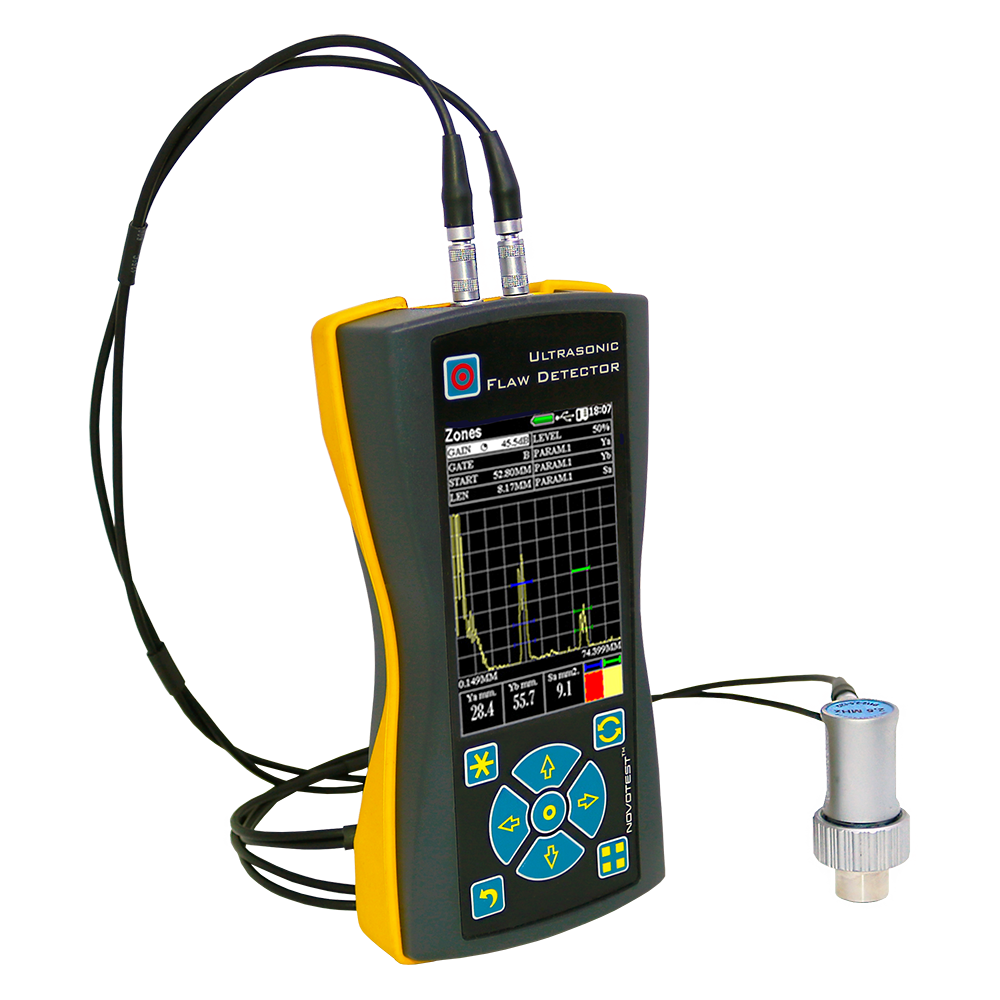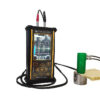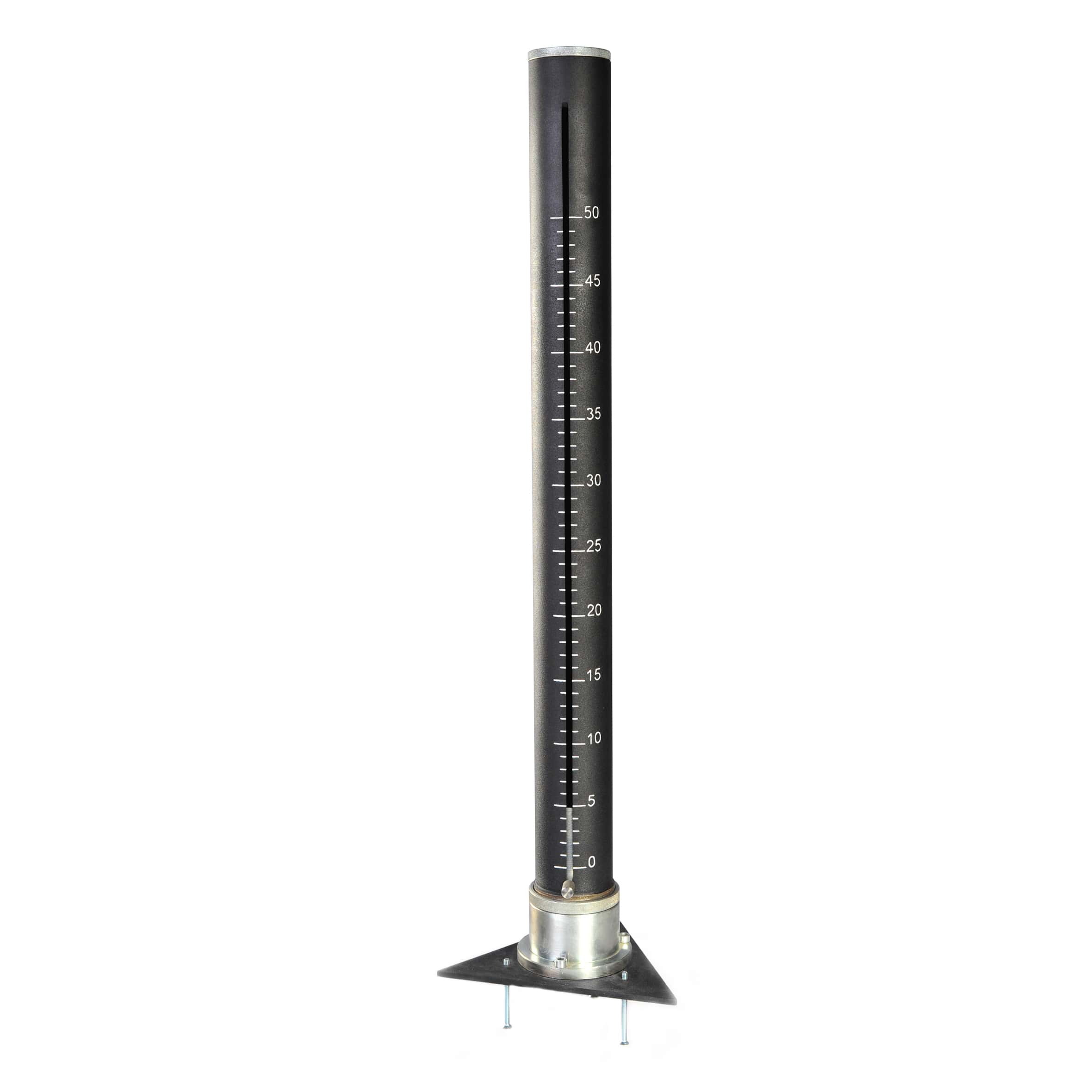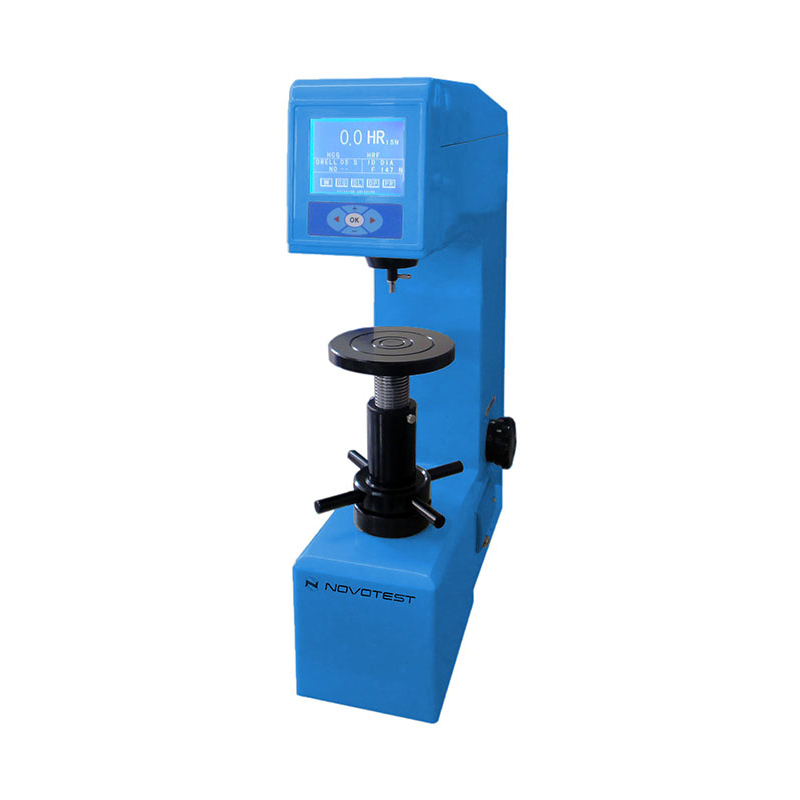Ultrasonic Flaw Detector, a sophisticated instrument used in non-destructive testing (NDT) to identify and analyze internal defects or discontinuities within materials, such as metals, plastics, and composites. The Ultrasonic Flaw Detector utilizes ultrasonic waves to detect, locate, and characterize flaws, ensuring the structural integrity of components. Here are the key features of our Ultrasonic Flaw Detector:
Novotest
Ultasonic Flaw Detector
Key Features:
- Ultrasonic Transducer: The instrument is equipped with ultrasonic transducers that emit high-frequency sound waves into the material being tested. These waves travel through the material and are reflected back by internal defects.
- Pulse-Echo Technique: The most common technique employed by Ultrasonic Flaw Detectors is the pulse-echo method. The transducer alternates between sending and receiving ultrasonic pulses, allowing the detection of flaws by analyzing the time delay and amplitude of the reflected signals.
- Material Thickness Measurement: In addition to flaw detection, the Ultrasonic Flaw Detector can measure the thickness of materials by analyzing the time taken for the ultrasonic waves to travel through the material.
- Multiple Modes and Frequencies: The instrument often offers various testing modes, including pulse-echo, through-transmission, and dual-element modes. It may also support different ultrasonic frequencies to adapt to various material types and thicknesses.
- Digital Display: The Ultrasonic Flaw Detector typically features a digital display that provides real-time visualization of ultrasonic waveforms, allowing operators to interpret and analyze the results.
- Data Storage and Analysis: Advanced models may include features for storing and analyzing test data, enabling comprehensive reporting and documentation. This is crucial for quality control and inspection records.
- Adjustable Parameters: Users can adjust parameters such as gain, sweep, and frequency to optimize testing conditions for specific materials and applications.
- Dynamic Range: The instrument’s dynamic range is essential for accurately detecting and analyzing signals, especially when dealing with materials of varying acoustic properties.
- Battery Operation and Portability: Many Ultrasonic Flaw Detectors are designed for portability and may operate on rechargeable batteries, allowing for on-site inspections in various industrial settings.
- Calibration: The Ultrasonic Flaw Detector requires regular calibration to ensure accurate and reliable flaw detection results. Calibration is typically performed using reference standards with known defects.
- Compatibility with Probes and Accessories: The instrument is designed to be compatible with a range of ultrasonic probes and accessories to accommodate different testing scenarios.
- Compliance with Standards: Our Ultrasonic Flaw Detector is manufactured to comply with relevant industry standards, such as ASTM E317 or EN 12668, ensuring that testing procedures meet established norms.









